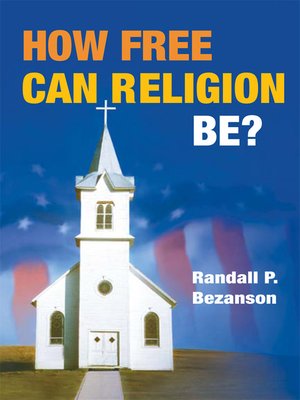
Sign up to save your library
With an OverDrive account, you can save your favorite libraries for at-a-glance information about availability. Find out more about OverDrive accounts.
Find this title in Libby, the library reading app by OverDrive.



Search for a digital library with this title
Title found at these libraries:
| Library Name | Distance |
|---|---|
| Loading... |
In tracking the evolution of the First Amendment's Free Exercise and Establishment Clause doctrine through Key Supreme Court decisions on religious freedom, legal scholar Randall P. Bezanson focuses on the court's shift from strict separation of church and state to a position where the government accommodates and even fosters religion. Beginning with samples from the latter half of the nineteenth century, the detailed case studies present new problems and revisit old ones as well: the purported belief of polygamy in the Mormon Church; state support for religious schools; the teaching of evolution and creationism in public schools; Amish claims for exemption from compulsory education laws; comparable claims for Native American religion in relation to drug laws; and rights of free speech and equal access by religious groups in colleges and public schools.
| Contents Preface Introduction Stage One. The Old Time Religion: Separation of Church and State Story One. The Free Exercise of Religion: God's Law or Caesar's? Reynolds v. United States, 98 U.S. 145 (1878) Story Two. "No law respecting an establishment of religion. . . ." Everson v. Board of Education, 330 U.S. 1 (1947) Stage Two. The Time of Testing Story Three. The Amish Conundrum: The Conflict Between Free Exercise and Non-Establishment Wisconsin v. Yoder, 406 U.S. 205 (1972) Story Four. Darwin versus Genesis Epperson v. Arkansas, 393 U.S. 97 (1968) Story Five. School Prayer Engle v. Vitale, 370 U.S. 421 (1962) Stage Three. The New Awakening Story Six. Peyote: God versus Caesar Revisited Employment Division v. Smith, 494 U.S. 872 (1990) Story Seven. Non-Establishment as Non-Discrimination Rosenberger v. University of Virginia, 515 U.S. 819 (1995) Story Eight. Equality as a Sword: The Ghost of Everson Locke v. Davey, 540 U.S. 712 (2004) How Free Can Religion Be? Notes Suggested Reading/Bibliography Index | "In this dense but rewarding study, Bezanson examines how the U.S. Supreme Court has interpreted the First Amendment's guarantee of religious freedom. Since the late 1980s, the court has held that the government can support, and even encourage, religious practice as long as it does not endorse one religion over another. Bezanson looks in detail at eight cases, beginning with Reynolds v. United States (1878), which upheld a law banning polygamy, then practiced by the Mormons. He also analyzes cases in which the Amish questioned compulsory education laws, fundamentalists protested school curricula that included evolution, and Native Americans sought protection for the use of peyote in religious ceremonies. The inclusion of lengthy quotations from the court records, and dialogues between lawyers and justices, add immediacy and authenticity. Unfortunately, because Bezanson's arguments are subtle and nuanced, he is unlikely to reach a broad general audience. "(July) - Publishers Weekly, March 22, 2006"A book in the crowded field of church-state relations that takes a well-mined subject and presents its familiar material in a refreshingly thought-provoking way."—Journal of Church and State
"How Free Can Religion Be? is a happy combination of cutting-edge thought and careful exposition of fundamental constitutional questions. Its case studies are presented as stories—not primarily stories of fact but stories of ideas. Collectively, they illustrate the evolution of Supreme Court jurisprudence with respect to the relationship between religion and government. Scholars will find ample food for thought in Bezanson's analysis of the thinking of litigators and jurists and in his assessment of the social consequences of the direction(s) the Court has taken. A wider...







